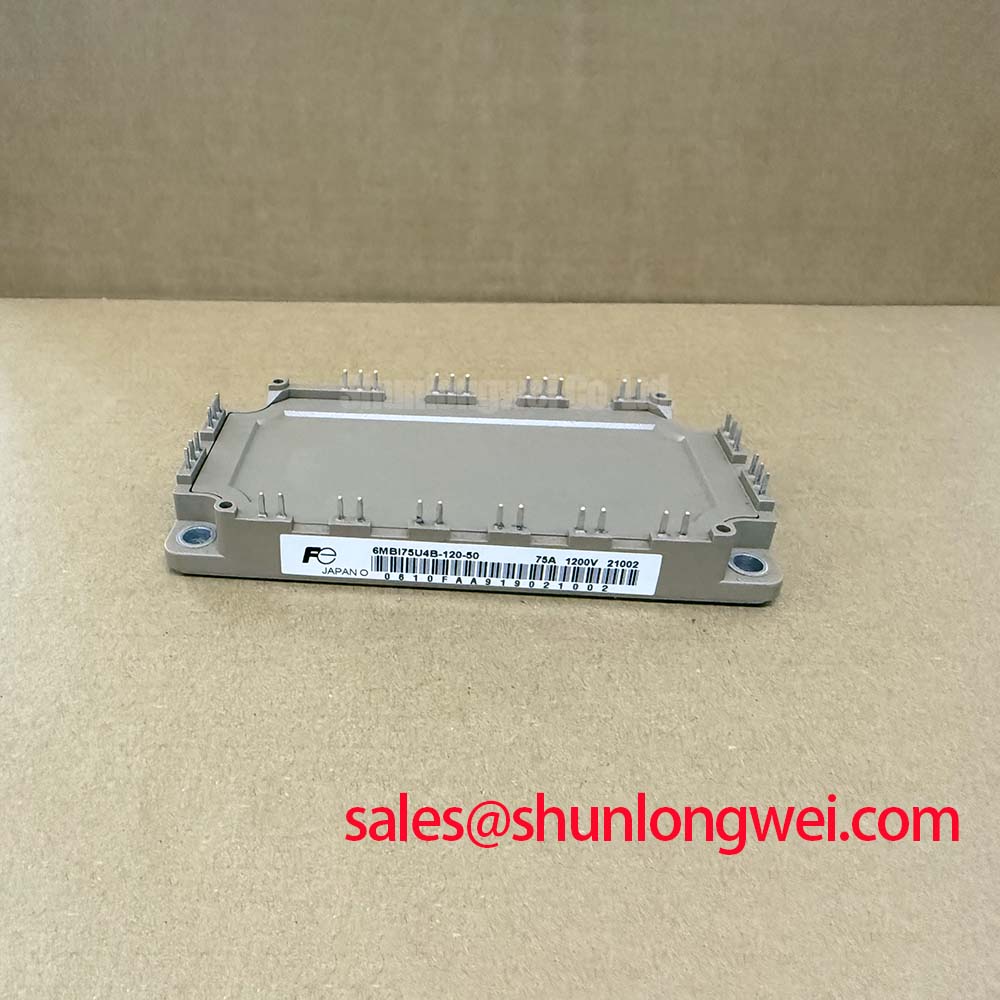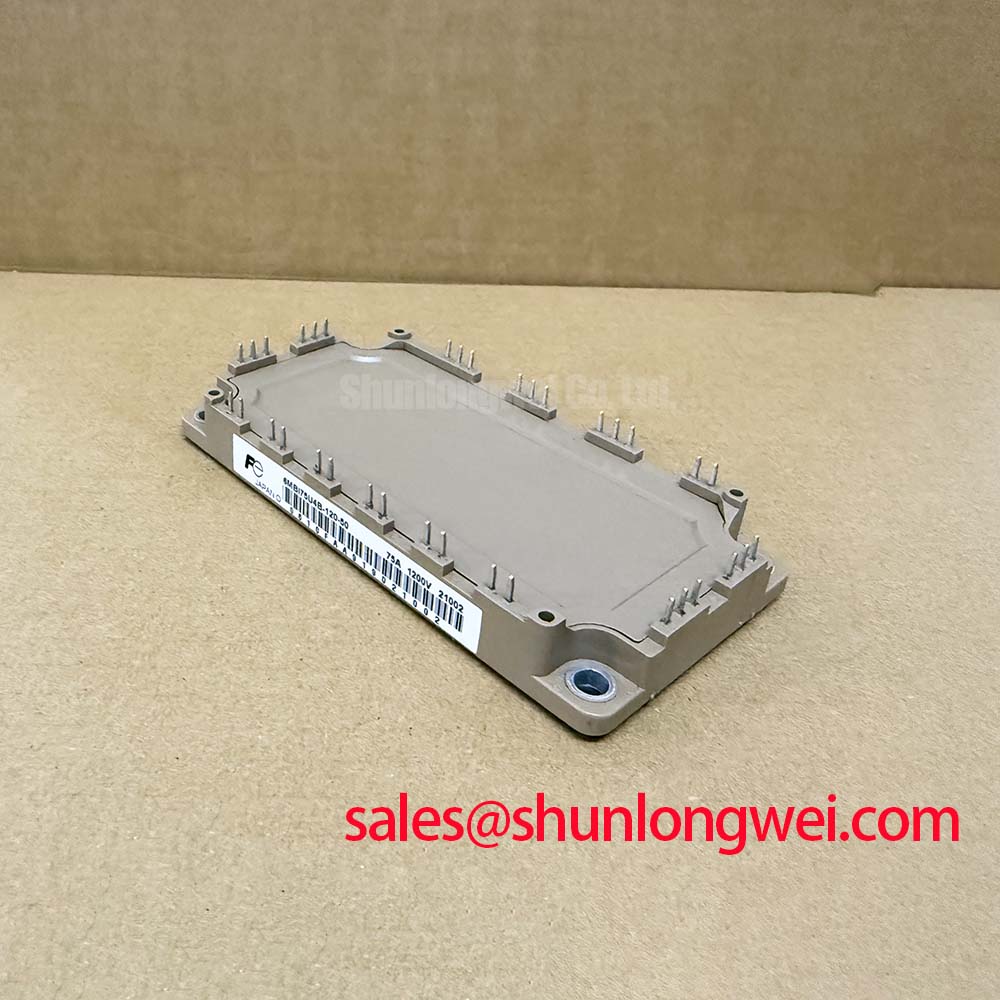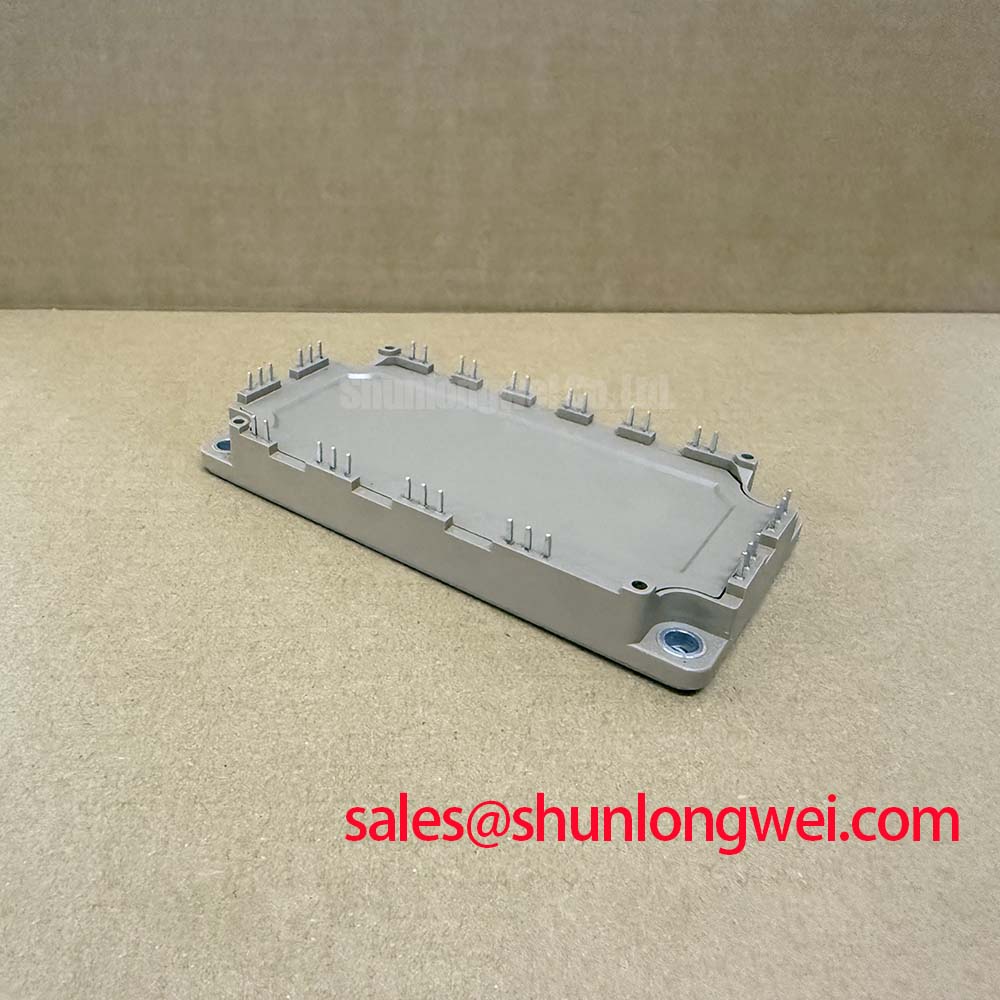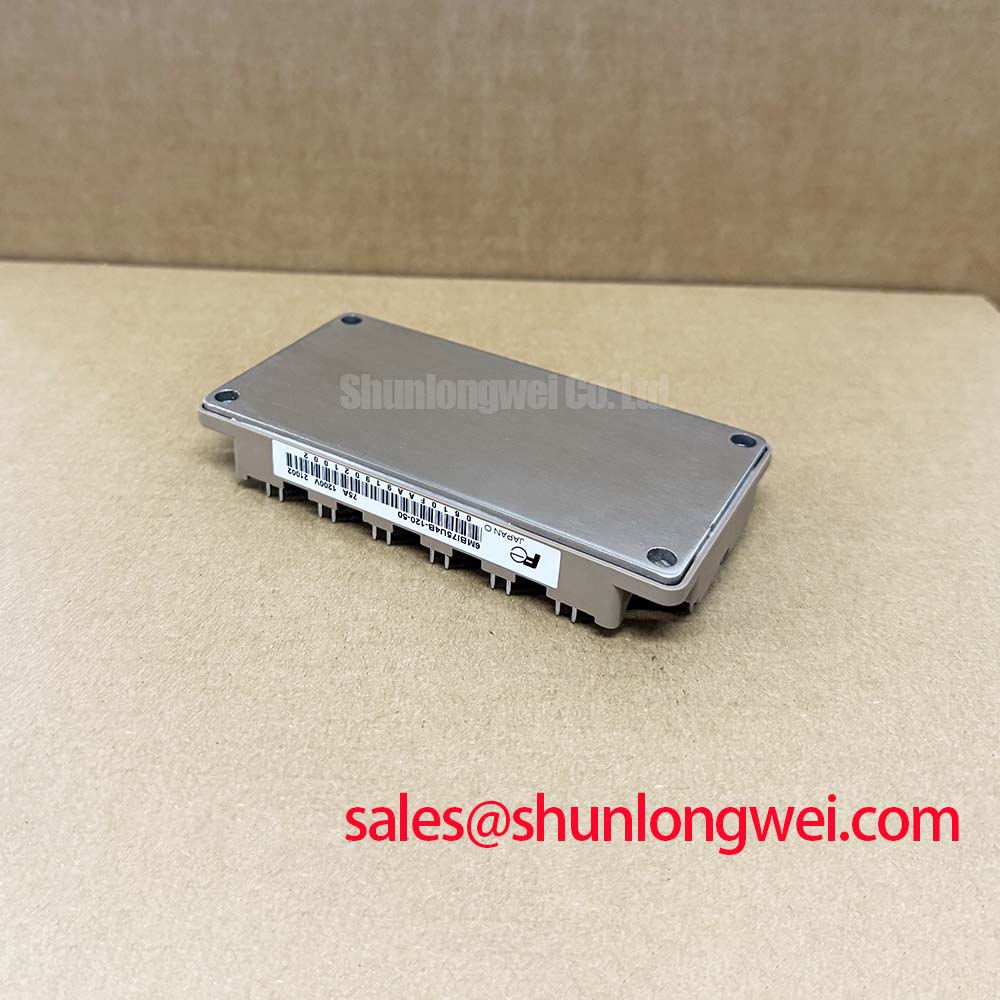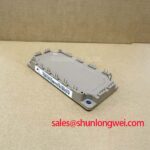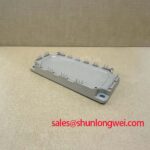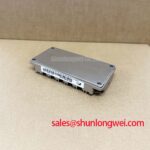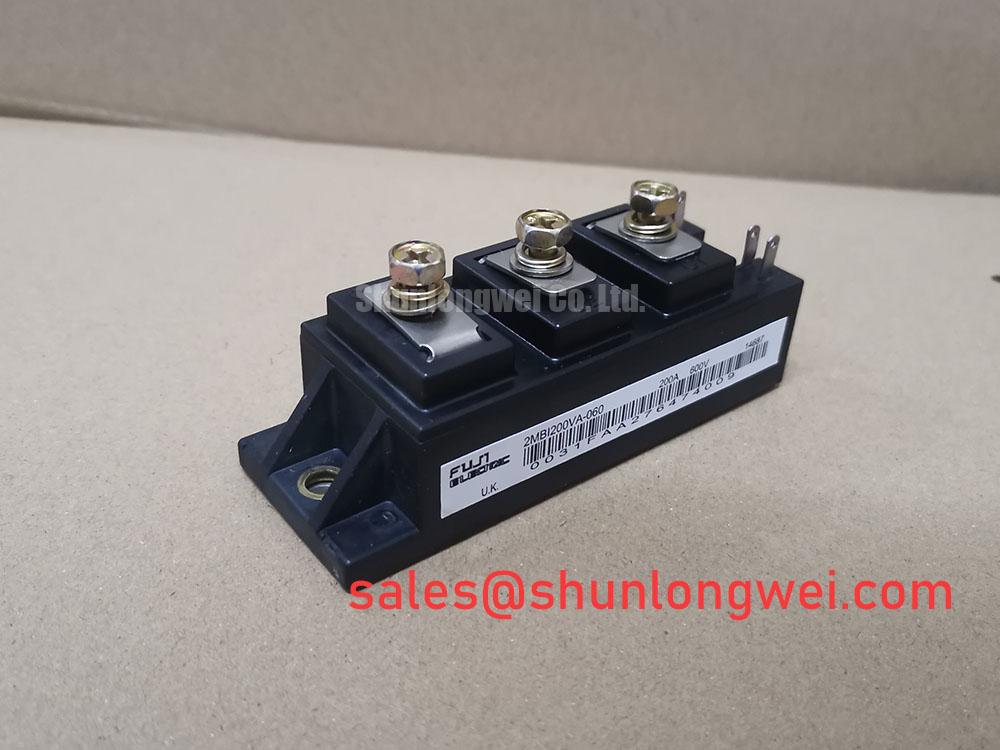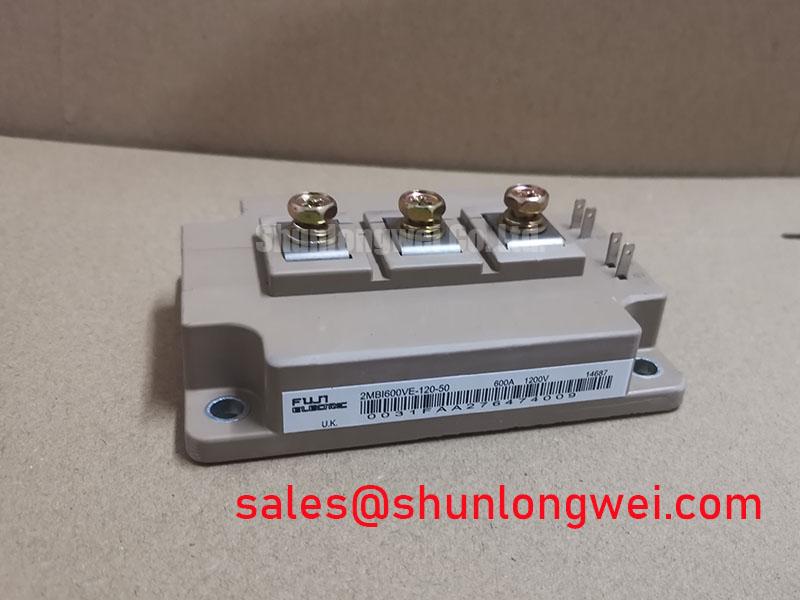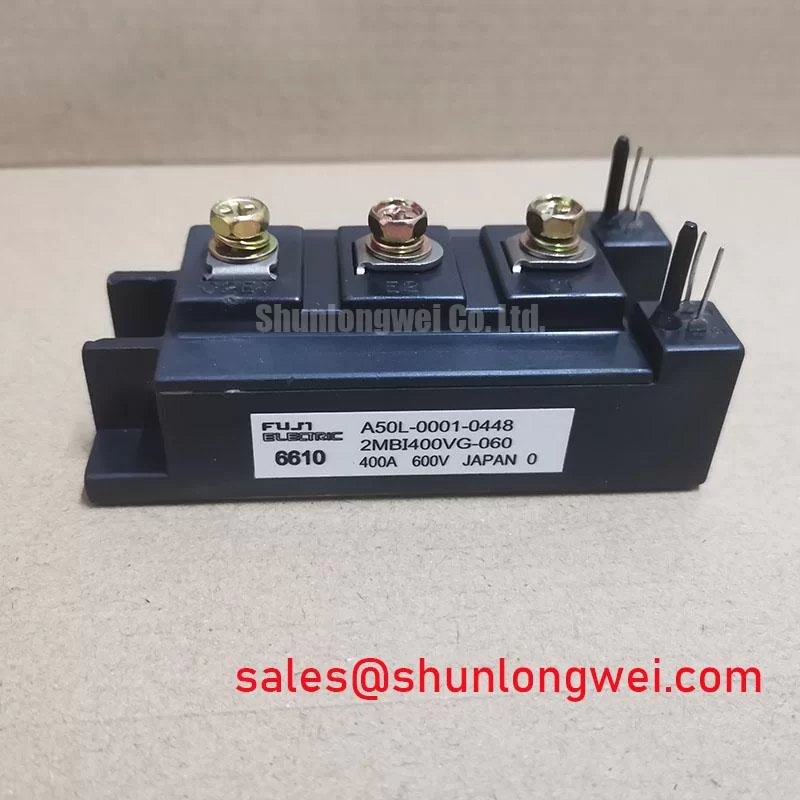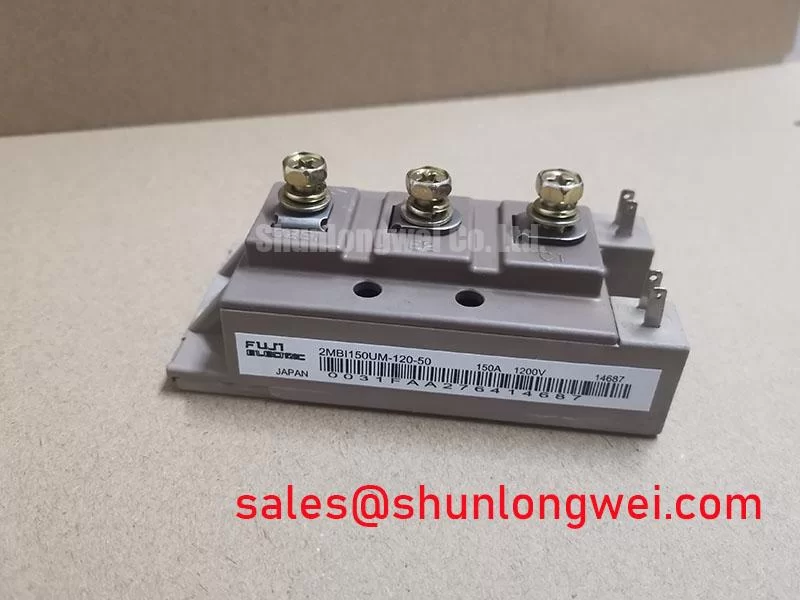Content last revised on November 19, 2025
6MBI75U4B-120-50 IGBT Module: Technical Data & Application Insights for High-Efficiency Inverters
Product Overview: Fuji Electric 6MBI75U4B-120-50
Optimizing Power Conversion with Low-Loss Switching Technology
The Fuji Electric 6MBI75U4B-120-50 is a 1200V, 75A six-pack IGBT module from the U4-Series, engineered to deliver superior efficiency in demanding power conversion applications. With its core specifications of 1200V | 75A | VCE(sat) 1.80V (typ), this module provides significant engineering benefits, including reduced system power loss and enhanced thermal stability. It directly addresses the need for compact and reliable inverters by minimizing the required cooling hardware. For engineers designing motor drives in the 5 to 15 kW range, the 6MBI75U4B-120-50's balance of low on-state voltage and robust switching makes it a compelling choice for achieving high performance-density.
Key Parameter Overview
Decoding the Specs for Enhanced Thermal Reliability
The technical specifications of the 6MBI75U4B-120-50 are foundational to its performance in high-frequency power systems. The parameters below highlight its suitability for applications where both conduction and switching efficiency are critical design criteria. The low collector-emitter saturation voltage is a key indicator of reduced power dissipation during operation.
| Parameter | Symbol | Condition | Value | Unit |
|---|---|---|---|---|
| Collector-Emitter Voltage | Vces | Tj = 25°C | 1200 | V |
| Continuous Collector Current | Ic | Tc = 80°C | 75 | A |
| Collector-Emitter Saturation Voltage | VCE(sat) | Ic = 75A, Tj = 125°C | 1.80 (Typ.) / 2.20 (Max.) | V |
| Forward Voltage (FWD) | Vf | If = 75A, Tj = 125°C | 1.80 (Typ.) / 2.20 (Max.) | V |
| Turn-on Switching Loss | Eon | Ic = 75A, Vcc = 600V | 10.0 | mJ |
| Turn-off Switching Loss | Eoff | Ic = 75A, Vcc = 600V | 11.5 | mJ |
| Thermal Resistance (Junction to Case) | Rth(j-c) | Per IGBT | 0.24 | K/W |
| Short Circuit Withstand Time | tsc | Vcc < 800V, Vge = 15V | ≥ 10 | µs |
Note: These parameters are typical values extracted from the official datasheet. For comprehensive electrical characteristics, performance curves, and operational guidelines, please refer to the complete product documentation.
Application Scenarios & Value
Achieving System-Level Benefits in General-Purpose Motor Drives
The 6MBI75U4B-120-50 is engineered for three-phase inverter applications where efficiency and thermal management are paramount. Its primary value is realized in systems like Variable Frequency Drives (VFDs), industrial servo drives, and general-purpose inverters controlling AC induction motors.
High-Fidelity Engineering Scenario: Consider an engineer designing a compact VFD for a materials handling system, where enclosure size is limited and ambient temperatures can be elevated. The primary challenge is thermal management—dissipating the heat generated by the power stage without requiring a large, costly heatsink. The low VCE(sat) of 1.80V (typ) on the 6MBI75U4B-120-50 directly addresses this. A lower on-state voltage drop means less power is converted to heat (P_loss = VCE(sat) * Ic). This reduction in conduction loss allows for a smaller heatsink design, enabling a higher overall power density and helping to meet compact enclosure requirements without compromising on reliability. What is the main advantage of its low VCE(sat)? It directly enables more compact and cost-effective thermal designs.
This module provides a robust solution for power conversion stages in uninterruptible power supplies (UPS) and renewable energy systems. For applications requiring higher current handling within a similar voltage class, the 6MBI150U4B-120-50 offers a higher current rating within the same U4-Series technology platform.
Technical Deep Dive
Balancing Conduction and Switching Losses for Optimal PWM Performance
In power electronics, particularly in inverter design, there is a fundamental trade-off between conduction and switching losses. Think of it like a car's fuel efficiency: conduction loss is analogous to the constant fuel burn required to overcome rolling resistance at a steady speed, while switching loss is the extra fuel burned during each acceleration and deceleration event. The Fuji Electric V-Series IGBT technology, on which the U4 series is based, is specifically engineered to find an optimal balance. The low VCE(sat) minimizes the "steady-state" conduction losses, which is critical in motor drives where the IGBTs conduct current for significant portions of the PWM cycle. Simultaneously, the device's characteristics are tailored for clean, rapid transitions between the on and off states, which controls the "transient" switching losses (Eon and Eoff). This balance is crucial for designers implementing Pulse Width Modulation (PWM) control, as it allows for higher switching frequencies without incurring excessive thermal penalties, leading to smoother motor operation and reduced audible noise.
Frequently Asked Questions (FAQ)
How does the typical VCE(sat) of 1.80V directly impact the thermal design of an inverter?
A lower VCE(sat) directly reduces conduction power loss (Ploss = VCE(sat) × Ic), which is the primary source of heat in an IGBT at high currents. This reduction means less heat must be dissipated by the heatsink for a given load. Consequently, engineers can specify a smaller, lighter, and more cost-effective heatsink, or achieve lower operating temperatures with an existing thermal solution, thereby increasing system reliability and power density.
What is the role of the integrated Free-Wheeling Diode (FWD) in this module for motor control?
In an inverter driving an inductive load like a motor, the FWD provides a safe path for the motor current to flow when an IGBT turns off. The FWD in the 6MBI75U4B-120-50 is performance-matched to the IGBT. Its fast and soft recovery characteristics are critical for minimizing voltage overshoots and reducing electromagnetic interference (EMI) during the commutation process, which is essential for creating a clean output waveform and ensuring the long-term reliability of the servo drive system.
What does the 10µs short-circuit withstand time (tsc) rating signify for system protection?
The tsc rating defines the maximum duration the IGBT can survive a direct short-circuit condition before catastrophic failure. A 10µs rating provides a critical time window for the system's protection circuitry (typically within the gate driver) to detect the fault and safely shut down the IGBT. This robust rating is a key element of the module's Safe Operating Area (SOA) and is essential for building a resilient power stage that can withstand fault events.
For what range of PWM frequencies is the 6MBI75U4B-120-50 typically optimized?
While the module can operate across a wide range, its balance of low conduction losses and moderate switching losses makes it ideal for PWM frequencies commonly found in general-purpose motor drives, typically in the range of 2 kHz to 15 kHz. Operating within this range leverages its high efficiency without leading to excessive thermal stress from switching losses.
Strategic Application Considerations
From a system architecture perspective, the 6MBI75U4B-120-50 represents a strategic component choice for designers looking to balance performance, cost, and power density. Its integration of six IGBTs and diodes into a single, compact package simplifies the power stage assembly, reducing component count and potential points of failure compared to discrete solutions. This design aligns with industry trends toward more compact and reliable industrial automation equipment. The module's well-defined thermal and electrical characteristics provide a solid foundation for predictable, repeatable performance, enabling faster design cycles and a more streamlined path to market for new inverter platforms.

